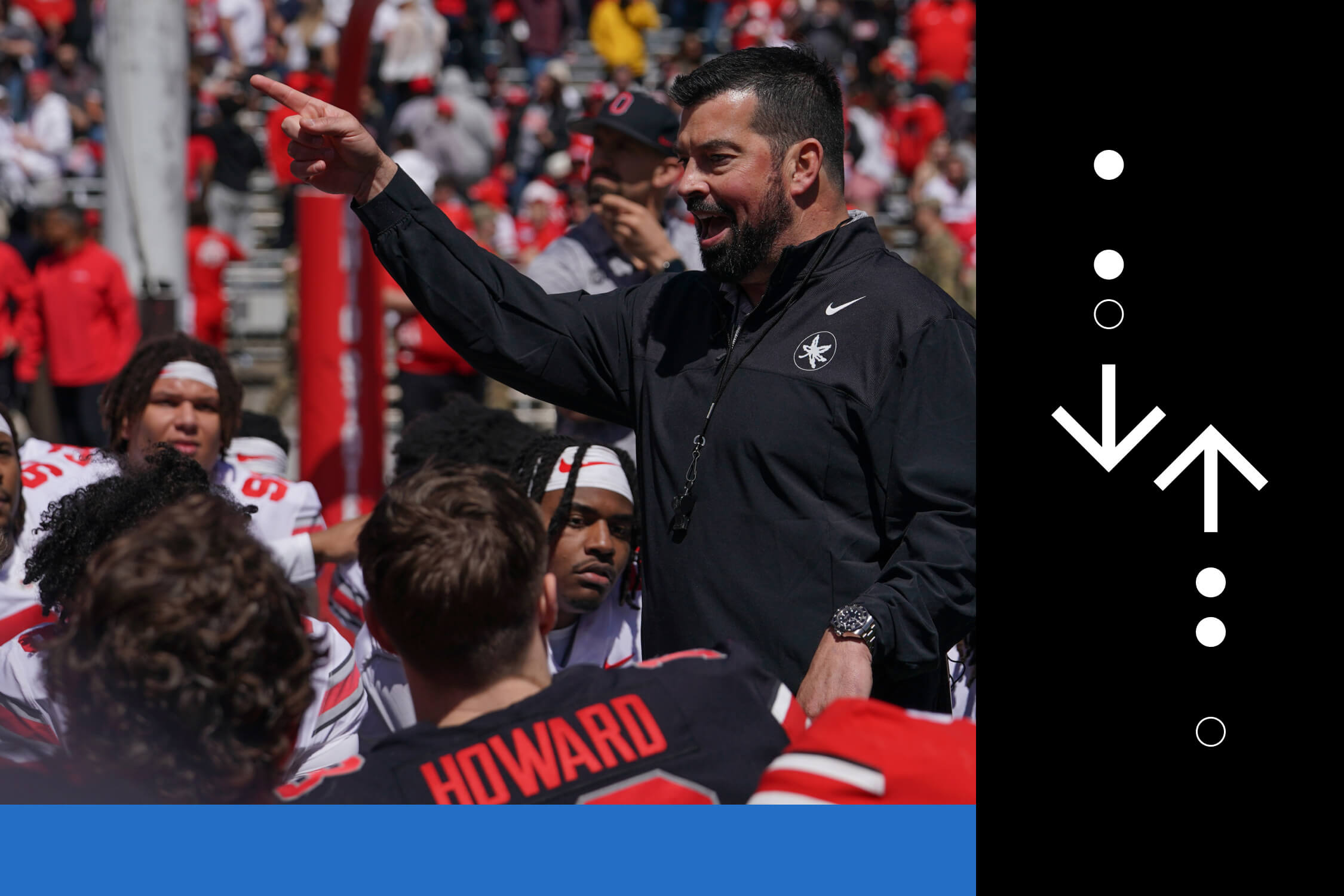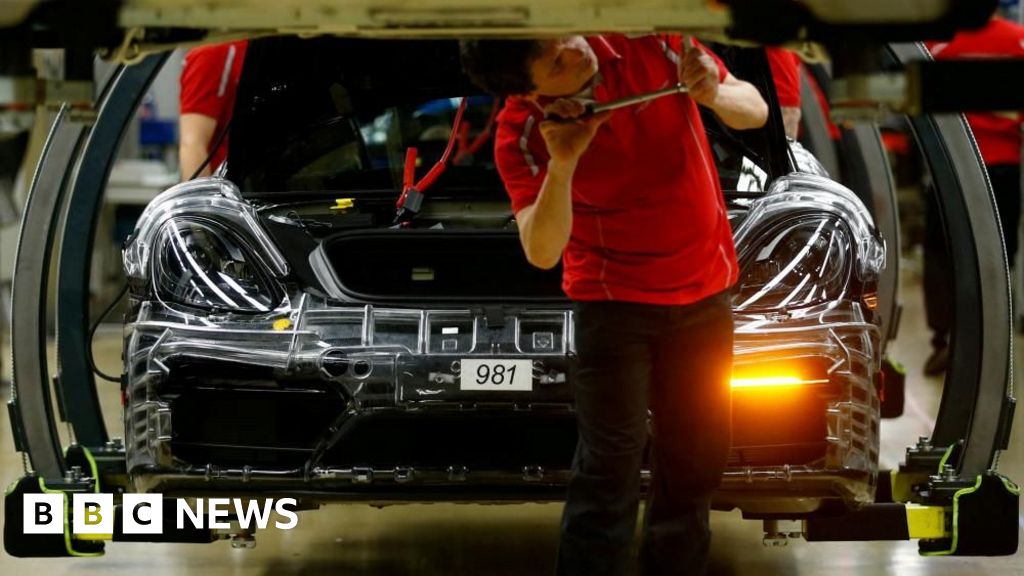
How Ohio State unlocked its NIL potential and won the college football offseason
- Sports
- May 5, 2024
- No Comment
- 135
COLUMBUS, Ohio — When Gene Smith and Ryan Day met after the season, the athletic director made it clear he was going “all in” on football. Ohio State heavily investing in football is hardly new, but after three consecutive losses to Michigan, Smith wanted to take it up a notch before retiring this summer.
Smith sketched out a long list of donors that the Buckeyes needed to call. He passed it to his sixth-year head coach.
“Ryan, you need to call these guys,” Smith recalled telling Day. “I can answer the questions, but you’re the football coach.”
The program needed some upkeep on the Woody Hayes Athletic Center, and Smith expects to go to the Ohio State board in May with proposed changes before his June 30 retirement date. And whatever coaching changes Day needed to make, Smith was on board for those too. Day’s assistant salary pool is now $11.4 million, up from $9.3 million last season.
But most importantly, Ohio State needed to take a step up in the name, image and likeness realm. After taking it slow the first year or two, Smith and Ohio State more aggressively embraced NIL, with Day freed up to take a lead role.
“If I call, 99.9 percent of the time they know why I’m calling,” Smith said. “But if it’s Ryan, that’s a game-changer.”

GO DEEPER
After an embarrassing Cotton Bowl loss, Ohio State donors went on a spending spree
Most of Ohio State’s highly touted junior class returned, with the exception of Marvin Harrison Jr. and Michael Hall Jr. Ask people around Ohio State why, and they’ll say it’s a mix of the culture, wanting to beat Michigan and competing for a national championship. After all, nobody in the junior class has beaten the Wolverines.
“I had a first- or second-round grade,” cornerback Denzel Burke said, “but at the end of the day I had no gold pants, no Big Ten, no natty, so it’s just being able to come back with my brothers and do it for the state of Ohio.”
But there’s no denying that NIL helped make it possible to retain players who might have otherwise entered the draft.
“This was the best decision for me and there’s no reason for me to rush to the league — we have NIL now,” Burke said. “We’re not worried about too many things.”
Returning for senior season
| Player | Pos | Career starts | Honors |
|---|---|---|---|
|
Denzel Burke |
CB |
35 |
All-Big Ten first team |
|
TreVeyon Henderson |
RB |
29 |
All-Big Ten first team |
|
Donovan Jackson |
G |
26 |
All-Big Ten first team |
|
JT Tuimoloau |
DE |
25 |
All-Big Ten first team |
|
Emeka Egbuka |
WR |
22 |
All-Big Ten second team (2022) |
|
Jack Sawyer |
DE |
16 |
All-Big Ten second team |
|
Tyleik Williams |
DT |
12 |
All-Big Ten second team |
In addition to stars like Burke, running back TreVeyon Henderson and receiver Emeka Egbuka deciding to stay, Ohio State hit the transfer portal hard, landing one of the top portal classes in the country in the winter. The Buckeyes signed Freshman All-America safety Caleb Downs from Alabama, All-SEC running back Quinshon Judkins from Ole Miss, Kansas State starting quarterback Will Howard, Alabama starting center Seth McLaughlin and the No. 1 quarterback recruit in the 2024 class in Julian Sayin, who transferred from Alabama after Nick Saban retired.
The portal success wouldn’t have happened without increased alignment at every level, from coaches to administrators to NIL collectives and donors. There’s a sense of urgency inside the program that extends to Ohio State’s primary NIL collectives, The Foundation and The 1870 Society.
The Foundation, which signed an exclusive deal with Downs and also has a deal with Howard, top-ranked 2024 signee Jeremiah Smith and many others, has raised 10 times more than what it raised at this point last year, said Brian Schottenstein, a co-founder and board member of The Foundation.
The success Ohio State is having this offseason isn’t a byproduct of just one thing or one motivating loss. It’s been constant conversations since 2021 on how Ohio State can best approach NIL, and it has the Buckeyes at the forefront of the 2024 national title conversation.
“I think this is what the country was afraid of,” said Ohio State donor Gary Marcinick, founder of the non-profit Cohesion Foundation collective.

CB Denzel Burke is a potential first-round NFL Draft pick. (Tim Heitman / USA Today)
How did Ohio State get here?
When The Foundation started as the first of Ohio State’s NIL collectives in February 2022, skepticism and confusion followed. There was a belief among many that because the Buckeyes were already one of the premier football programs, how much did they truly need NIL to compete?
Many donors didn’t know how NIL worked, either.
“The university wanted to take their time and engage in understanding the dos and don’ts before just fully supporting it, and I would’ve taken the same approach,” said former Ohio State quarterback Cardale Jones, a co-founder and general manager of The Foundation. “The athletic department’s job is to raise money for the university as a whole, and you don’t want to steer dollars away if things aren’t on the up and up with a program or collective.”
Much has changed in NIL in the past three years for people like Jones, who has his hands on everything The Foundation does, even in recruiting. He’s the point person for talking to players, recruits and their families about NIL contracts. Former Ohio State safety Tyvis Powell fills a similar role with The 1870 Society as the director of player engagement.
Ohio State wasn’t against paying athletes at the start — most of its players had NIL contracts with at least one of the collectives — but for a time it wasn’t willing to go all in on NIL in recruiting.
“I think anything new takes time,” Schottenstein said. “Donors might have been confused, a lot of articles made NIL scary, but when it comes down to it, it’s just marketing deals for athletes.”
Ohio State’s growth is a mix of a few things, starting with Day’s evolving focus.
Before Ohio State’s loss to Missouri in the Cotton Bowl, Day began to think about taking on more of a CEO role, stepping back from calling plays on offense. He hinted at the possibility last offseason but didn’t turn the duties over to first-year offensive coordinator Brian Hartline.
He decided this offseason, with financial backing from Smith, that he would hire an experienced offensive coordinator he could trust to call plays.
The first hire was Bill O’Brien, who lasted just three weeks before taking the head coaching job at Boston College. Then came UCLA head coach Chip Kelly, Day’s mentor, who wanted to move in the opposite direction and narrow his focus to running an offense. Now Day gets more free time to manage the big picture.

GO DEEPER
From head coach to play caller: Chip Kelly hits the practice field at Ohio State
The impact of Day’s name popping up on a donor’s phone is substantial. Even new men’s basketball coach Jake Diebler has benefitted from his growing fundraising duties.
“We have a big list of contacts, but we’ve had them make the calls because it goes further,” Schottenstein said. “It makes it more real. They can talk about the team and make the donor feel they have the inside access. … It makes them feel part of the team and it helps them want to donate because they are part of the family.”
Mark Stetson, a longtime donor who founded The 1870 Society, said getting a call from the head coach can tip the scales for a donor who may be on the fence. It’s less about Day calling and asking for money than it is him explaining to donors how NIL can impact athletes.
“I think when you are communicating with a coach you can feel the need ,and that’s where you get a lot of the positives of NIL,” Stetson said. “You go across the non-rev sports, there’s kids who work two or three jobs to be able to live, but with NIL they can focus more on athletic and academic hours. Hearing that from the coach is a direct line to see the impact.”
This isn’t the first time Day has pushed for more NIL support. In 2022, Cleveland.com reported that Day told the Columbus business community he believed it would take $13 million to keep the roster intact.
But now with some responsibilities given to Kelly, Day has ramped up his NIL fundraising efforts on a more direct, day-to-day basis.
“It’s become much more of a part of it,” Day said. “You have to be involved with that now, because fundraising has always been important, but I think now it’s even more important.”

Quinshon Judkins had two 1,000-yard seasons at Ole Miss. (Adam Cairns / Columbus Dispatch / USA Today Network)
Can Buckeyes sustain success?
Being compliant in the NIL world takes a careful balance for football coaches and programs.
In the past, the coaching staff would have to wait for a student athlete or parent to bring up NIL and pass the prospect to the collectives, which is where Jones and Powell came in. Now, after a federal judge in Tennessee granted a preliminary injunction to prohibit the NCAA from enforcing its own rules against pay-for-play recruiting, that’s not the case.
Collectives are allowed to talk directly to recruits for the first time, simplifying the process.
“I think it makes us more powerful because we can talk to portal players when they enter,” Schottenstein said. “We couldn’t do that before, so it makes that donation even more important now because retention is important, but the transfer portal is too.”
There’s an education process that Jones enjoys when he’s talking to recruits. Both Jones and Powell are finding success in their roles because neither put together a long-term NFL career, but they have found a way to build careers off their success at Ohio State.
Powell, who was vocal about Ohio State’s struggles after the Cotton Bowl loss, has given Day credit for the changes he made on his staff and evaluating the program’s mindset around NIL.
“I challenged Ryan Day to look at his staff and figure out who is bringing something to the table and if they’re not, you have to get them out of there because you’re doing the kids a disservice,” Powell said. “I was hopeful he would make some changes and he did. They changed their approach on NIL in the offseason.”
There’s more to transferring to Ohio State than just receiving NIL money, which is something that players like Downs and Judkins have emphasized. Still, the additions of Downs, Judkins, Howard and McLaughlin were part of Ohio State’s NIL budget.
Ohio State transfer additions
| Transfer | Pos | Team | Honors/notes |
|---|---|---|---|
|
Will Howard |
QB |
All-Big 12 second team |
|
|
Quinshon Judkins |
RB |
All-SEC first team |
|
|
Caleb Downs |
S |
SEC Freshman of the Year |
|
|
Seth McLaughlin |
C |
25 career starts |
|
|
Julian Sayin |
QB |
5-star recruit in 2024 |
That’s not to say Ohio State just decided to pay every player a million dollars or more. Though no financial terms of NIL deals are disclosed, Powell said that Ohio State has roster construction priorities like any other team.
“If you are the No. 1 player in the country it’s easy to market and sell that, it’s easy to give them a bunch of money. But if you get these three-star kids, maybe they don’t have the big name or game, they aren’t getting a bag,” Powell said. “Now, don’t get me wrong, they’re getting a couple of dollars in their pocket, but I would not call it a bag.
“It goes off of team needs too. If you’re a premier defensive end, those go for more than a center. That’s the nature of the business. If a team needs a premier corner, then they will pay more for that guy than a defensive tackle. It reminds me of the NFL a little bit because when free agency hits, guys will overpay for that position because they need it.”
Though most of its spending goes to football, in part because of the sheer size of the roster, The Foundation has signed every player on the men’s basketball team, including the new transfer additions.
Excited to get to work on and off the field, in the Columbus community as a student-athlete partner of @TheFoundation1_
To learn more about THE Foundation and how you can support student-athletes, visit #GoBucks pic.twitter.com/5fxHp6xn8p
— Caleb Downs (@caleb_downs2) January 25, 2024
The 1870 Society has only been around since the spring of 2023, so Stetson said they don’t have a lot to compare it to, but this year’s NIL fundraising has been substantial.
“I think there’s been some real extraordinary support,” Stetson said. “There’s been a huge influx of $10 a month and the bigger ticket purchases, as well. Regardless of trending year over year the support has been incredible.”
Everything is working for Ohio State now, but there are constant conversations about what’s coming next and accounting for the possibility of donor fatigue. Stetson said that’s where creativity on part of the collectives comes into play.

GO DEEPER
‘My gripe is with the system’: Why some fans are resisting giving money to NIL collectives
The Foundation, for a week in January, matched all donations that were made. It ended up matching the $500,000 that fans donated, which also included a donation from former quarterback C.J. Stroud. In total, The Foundation raised more than $1 million in a week. It’s now in the middle of another matching promotion, which will extend to the end of May and has raised around $220,000 as of April 30, according to Schottenstein.
But more than just asking for donations, both Ohio State collectives have hosted events with the proceeds going toward NIL. In July, The Foundation will host what it calls “The Fantasy Experience,” which will allow participants to go behind the scenes like a prospective recruit to see what goes into a game day at Ohio State, meet alumni and more. In March, The 1870 Society, with the help of the football program, sold tickets to a tour of the Woody Hayes Athletic Center, which included meet-and-greets with players and coaches.
Stetson said he sees it as the collective’s job to find creative ways to raise money without always asking donors directly for money.
“It’s about creative events or opportunities for fans to get access or create new content, or being very engaged with the business community across the country, or how can we tap into what NIL is intended to be?” Stetson said. “I would hope that a donor-centric model has built a bridge and on the other side of that bridge is a more sustainable model.”
Regardless of what’s next, Ohio State is in a position to chase a national championship now with one of the best rosters in the country after watching its archrival win one last season. It happened thanks to a combination of strong recruiting, player retention and transfer portal success.
Amid the angst of losing to Michigan, Gene Smith hopes he helped put Ohio State on stable ground as former Texas A&M athletic director Ross Bjork gets set to take over this summer.
“Where we are with football, not winning Big Ten championships, I wanted to make sure that we did everything we could to make sure football has a real chance next year,” Smith said. “When I think about my legacy, I think about that. I hate to leave Ohio State when football is not back to winning Big Ten championships.”

GO DEEPER
What happened to Deion Sanders’ Colorado castoffs? Revisiting a record-setting exodus
— The Athletic’s Stewart Mandel contributed to this report
(Top photo: Jason Mowry / Icon Sportswire via Getty Images)
#Ohio #State #unlocked #NIL #potential #won #college #football #offseason








